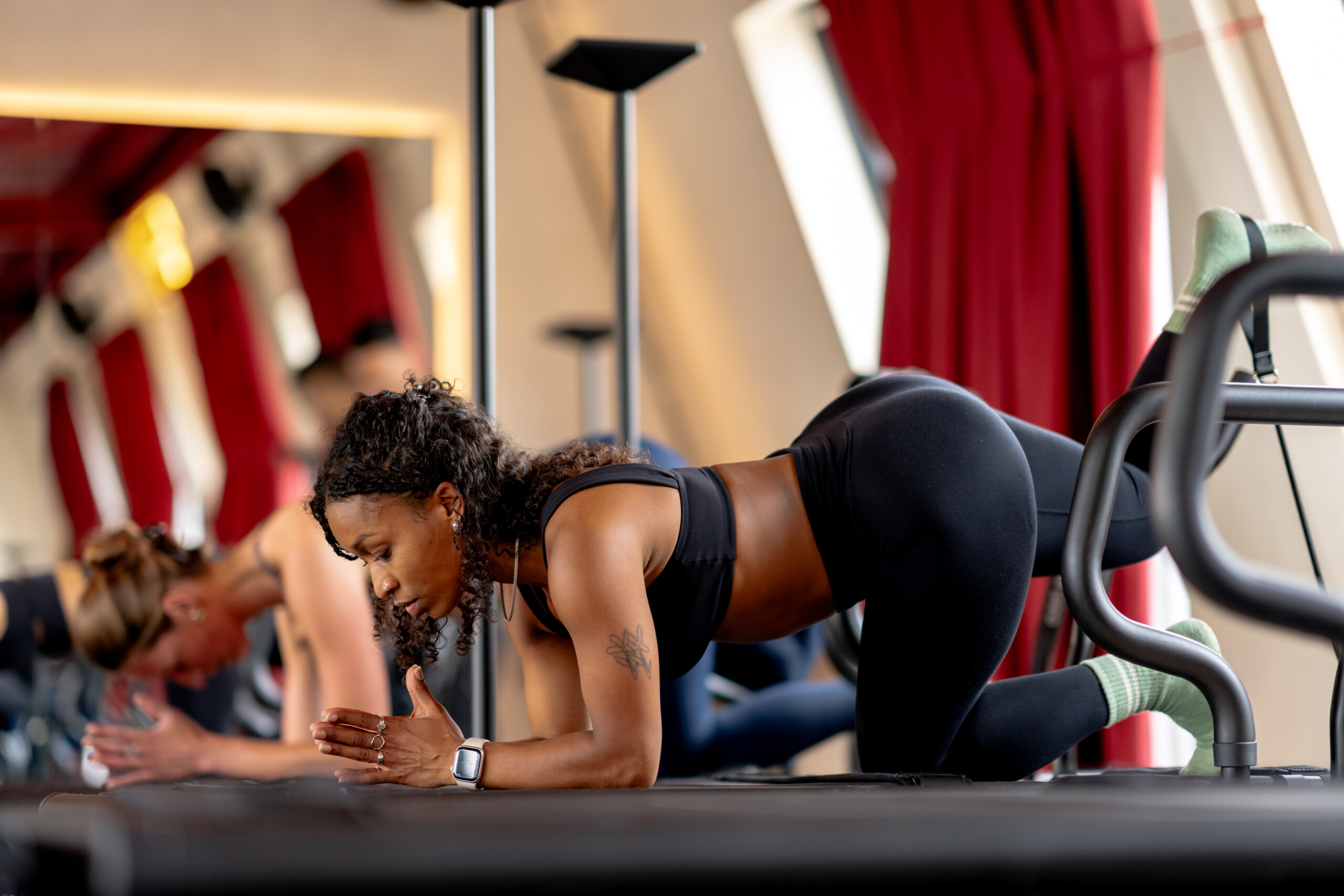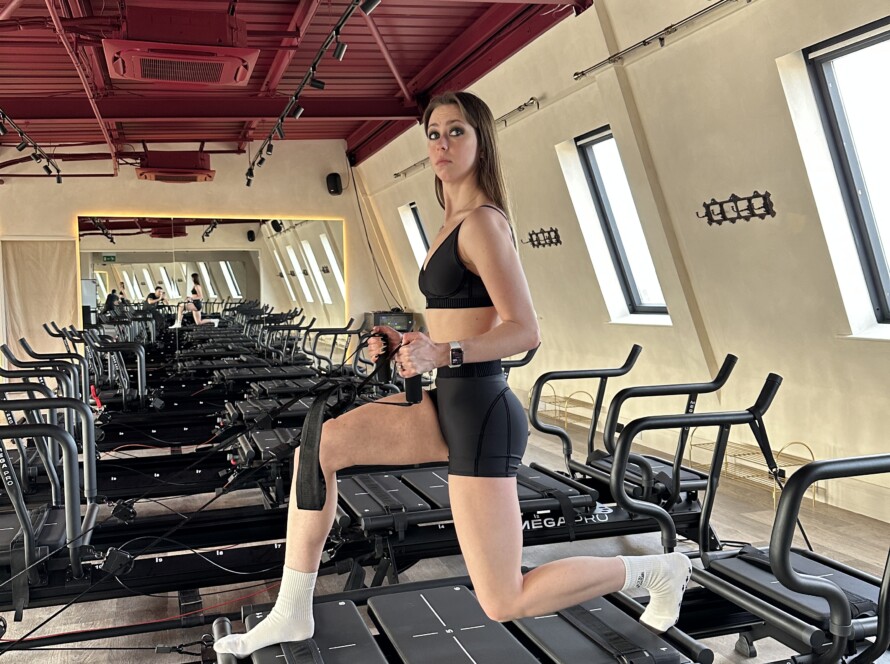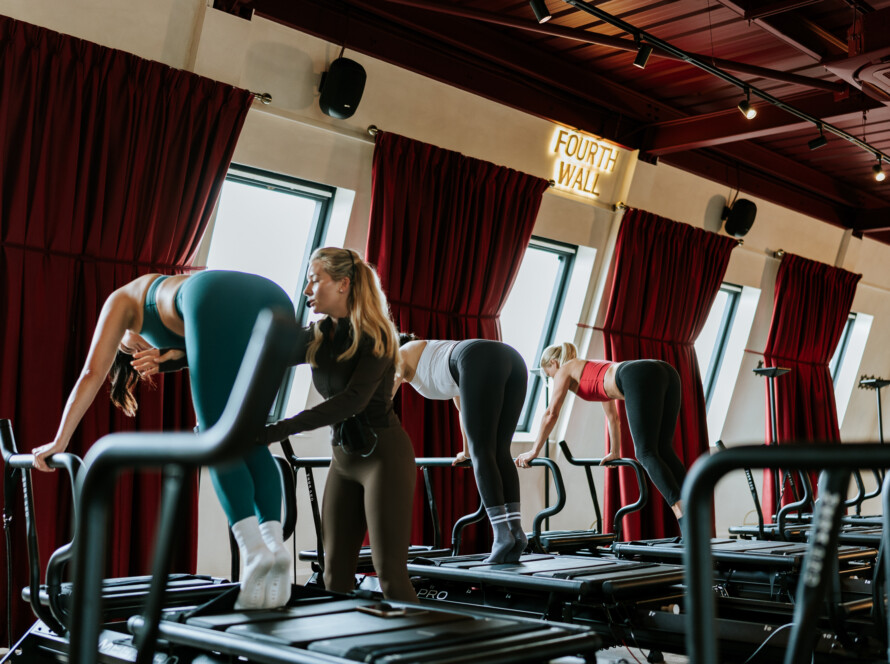You know the feeling when you do endless reps on a machine, but your core still feels weak and your endurance stalls? Lagree Moves within a Lagree workout focuses on slow, controlled micro movements, isometric holds, and precise tempo to build real strength, muscular endurance, and rock-solid core control. This article breaks down the key moves, progressions, and studio cues so you can practice with purpose and see steady gains. Ready to try techniques that change how your body works under resistance?
Blood, Sweat, and Tears’ Lagree in London offers guided megaformer sessions, clear coaching on technique, and tailored progressions to help you master Lagree Moves for strength, endurance, and core control.
What is the Lagree Workout Method?
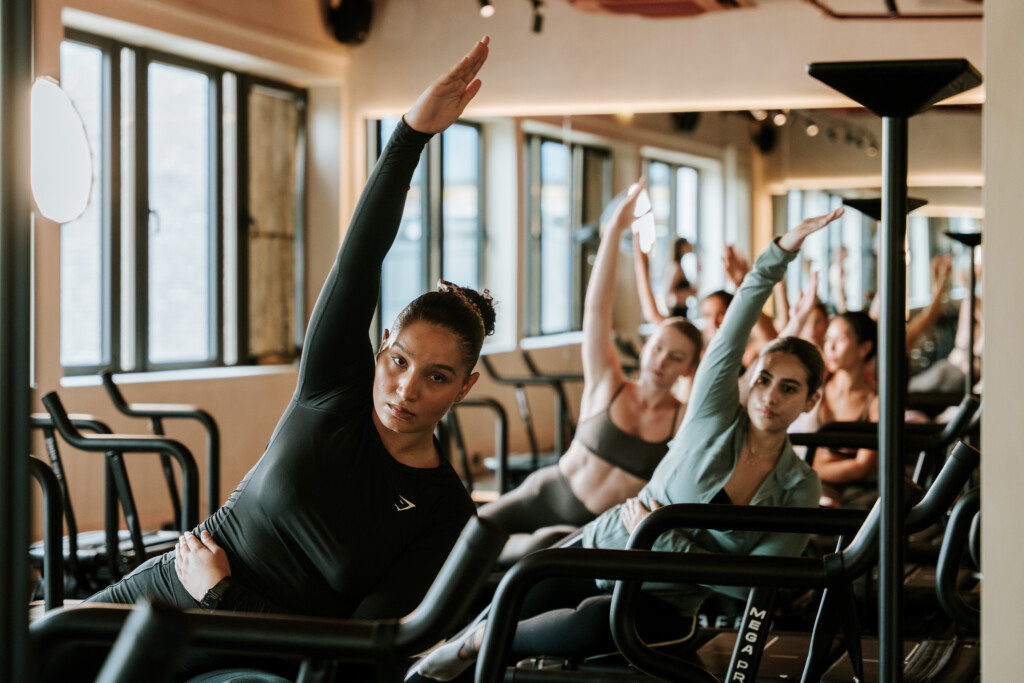
Lagree is a high-intensity, low-impact method that forces muscles to work under constant tension. Trainers use slow, precise Lagree moves on a carriage-based machine to extend time under tension and recruit stabilizer muscles.
That approach builds strength, muscular endurance, and defined muscle tone while reducing joint strain, which changes how you move and hold posture in everyday activities.
Slow Moves, Big Effects
Lagree moves use controlled tempo and isometric holds instead of fast repetitions. Move the carriage slowly, control the straps and springs, and keep the core braced. That continuous demand increases metabolic output and improves neuromuscular control while keeping impact low.
Want to feel your core working through a full-body sequence during a single song?
The Magic 8 Principles Explained
- Effective Form: Alignment and posture matter. Trainers cue micro adjustments to keep the load on the target muscles and off the joints.
- Effective Range of Motion: Full, controlled ranges recruit more muscle fibers and maintain joint mobility.
- Effective Tempo: Slow, steady tempo keeps muscles under tension and reduces momentum cheating.
- Effective Duration: Holds and extended reps build endurance and mental focus as much as brute strength.
- Effective Sequence: Exercises follow an order that preserves intensity and spreads fatigue across muscle groups.
- Effective Transition: Smooth, quick changes between moves keep the heart rate up and maintain training economy.
- Effective Resistance: Adjustable springs and straps let you dial resistance to your current capacity.
- Effective Planes of Motion: Training across multiple planes engages stabilizers and improves functional strength.
How Lagree Moves Work
Lagree moves look simple but require precise control.
Expect:
- Plank variations
- Single-leg presses
- Slow lunges
- Hamstring curls
- Glute bridges
- Rowing patterns
- Oblique rotations
Trainers call for micro adjustments, tiny range changes, and isometric pauses to amplify each move. The carriage, straps, and springs create instability that forces the core to stabilize through every repetition.
The Machine and Gear: What You Use
Classes use a Megaformer-style carriage machine with springs, straps, handlebars, and a sliding platform. Resistance comes from spring tension and strap length, not heavy plates.
You manage load with minor changes to spring settings or foot placement, which means progress happens by increasing time under tension and refining control rather than simply adding weight.
Class Flow and Training Intensity
Sessions mix strength and conditioning with short cardio bursts and active recovery.
Expect continuous sequencing:
- Multiple moves per muscle group
- Quick transitions
- Few long rests
That keeps the heart rate elevated and taxes muscular endurance. Teachers cue tempo, breathing, and alignment to maintain quality under fatigue.
Who Gets The Most From Lagree Moves
Beginners, busy professionals, athletes, and those rehabbing injuries can all benefit.
The method scales easily:
- Reduce spring tension
- Shorten ranges
- Skip advanced variations to start
Advanced trainees increase time under tension, reduce rest, or use more challenging positions to progress. The low-impact nature protects joints while still delivering high-intensity work.
Common Moves to Learn and Cues to Use
- Plank to Pike: Keep shoulders stacked and drive hips up slowly, controlling the carriage on the descent.
- Leg Press Variation: Push through the heel, maintain a neutral spine, and resist the carriage on the return.
- Glute Bridge Hold: Squeeze at the top and breathe into the ribcage, not the neck.
- Oblique Rotation: Rotate from the torso while keeping the pelvis stable to isolate the waistline.
- Rowing Pull: Retract the shoulder blades first, then pull with the elbows to protect the rotator cuff.
Ask your instructor for specific progressions to match your current strength and mobility.
Safety, Form, and Progression
Avoid bouncing the carriage, dropping hips, or letting the shoulders collapse. Minor posture faults multiply under slow, high-tension work. Breathe deliberately and stop any move that creates sharp joint pain.
Progress by increasing rep duration or reducing rest before increasing spring resistance.
How To Choose A Class Or Instructor
Look for certified instructors who correct form and offer tailored regressions and progressions. Small class sizes let teachers make micro adjustments and monitor carriage settings. Ask if the studio tracks resistance changes or offers private sessions for a technical primer.
What To Expect After A Few Sessions
- Improved core endurance
- Better posture
- Increased muscular definition
Muscle fatigue will feel different; expect a slow burn rather than explosive soreness. Want a short home test you can try after class? Try a 30-second supported plank and notice where fatigue appears first.
Related Reading
Key Lagree Moves and Exercise Categories
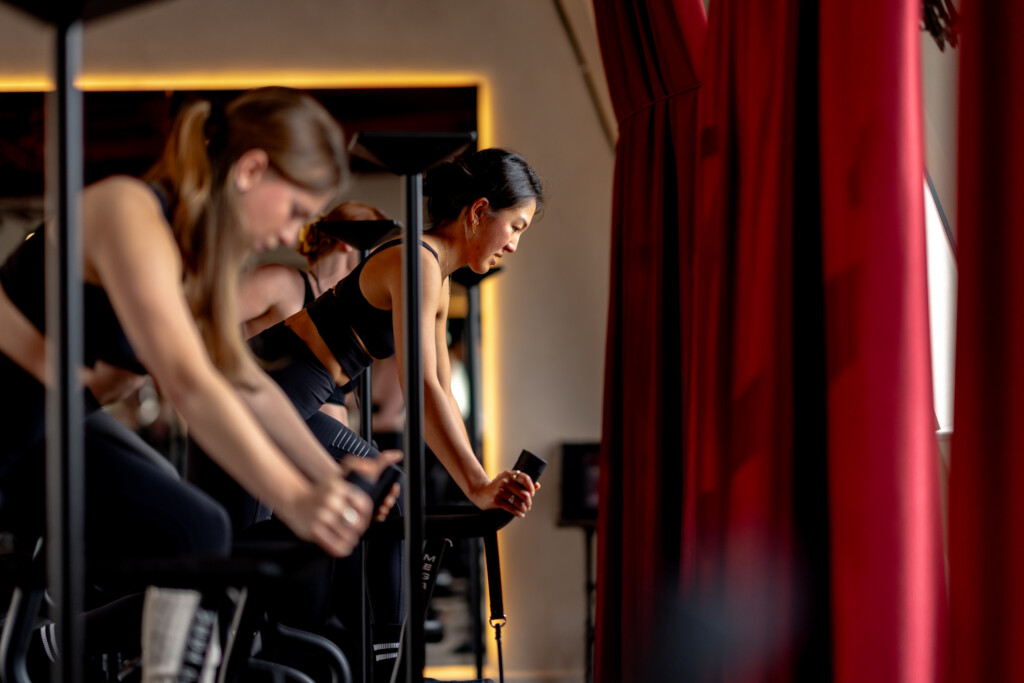
Lagree uses the Megaformer to keep a constant load and tension while you move slowly through each exercise. Trainers stack isometric holds, slow concentric and controlled eccentric work, and short pulses to fatigue muscles without heavy impact.
The result blends strength training, muscular endurance, balance, and cardio conditioning into a 45-minute class that focuses on efficient, precise technique. Want to know which moves you will repeat most often during class?
Plank Variations That Test Core and Shoulder Control
Planks in Lagree go far beyond the static gym version. Expect forearm planks, side planks, high planks, and planks with alternating leg lifts or shoulder taps. Many are held under long tension or performed with slow leg slides on the carriage to force deep core stabiliser activation and shoulder endurance.
Cueing focuses on maintaining a neutral spine, lowering the ribcage, and breathing into the back, allowing the transversus abdominis and obliques to work effectively without gripping the neck. Can you maintain perfect alignment while the carriage moves?
Squats and Lunges Done Slow to Beat the Burn
Lagree squats, split squats, and lunge pulses use a deliberate tempo to load glutes, quads, and hamstrings across the full range of motion. Slow lowering and micro pulses create the classic muscle shake as motor units cycle in and out of fatigue.
Trainers emphasise hip hinge, knee tracking, and glute activation to protect joints while maximising work. Use shorter range and lighter spring settings to scale; ask how many pulses you can hold with rigid form.
Back Extensions and Rows for Postural Strength
Back extensions, rowing patterns, and prone pulls strengthen the upper back, lats, and spinal erectors to correct forward shoulder posture. Movements on the carriage and straps require scapular control and coordinated breathing, so you learn to move from the posterior chain instead of overworking the neck.
Include both single-arm rows and two-handed rows to stress anti-rotation and stability, and use slow eccentrics to improve spinal integrity. Which cue helps you feel your scapulae engage first?
Focused Leg Work: Isolation with Precision
Leg circuits include hamstring curls, inner thigh presses, side leg lifts, and single-leg glute work that isolate specific muscles with spring resistance. The Megaformer lets you dial tension for hamstring lengthening and controlled concentric contractions without pounding the joints.
Trainers layer unilateral challenges to expose weakness and force recruitment of stabilisers around the hip and knee. Try a single-leg hamstring curl with a steady breath and count the tempo aloud.
Core Focused Exercises Borrowed from Pilates, Enhanced for Strength
Moves like the Bear, French Twist, and suspension style crunches emphasize deep core stabilisers and anti-rotation strength. Lagree borrows Pilates precision but increases time under tension and integrates functional anti-flexion and anti-rotation drills.
Work includes transverse plane rotation, controlled spinal flexion, and posterior chain integration, so the abs support movement rather than just creating a flat front. How does your breath change when you hold a long isometric core position?
Upper Body Strength Without Heavy Weights
Upper body work on the Megaformer uses spring resistance to keep a constant load through:
- Bicep curls
- Tricep presses
- Chest openings
- Shoulder raises
Slow concentric actions and controlled eccentric returns build lean muscle while minimising joint strain. Sequence pressing and pulling to balance the shoulder complex and avoid overuse, and add single-arm variations to expose imbalances.
Which press pattern challenges your scapular control the most?
Programming Tips: How These Categories Fit Together in Class
A typical Lagree session balances lower body strength, core endurance, posterior chain work, and upper body conditioning while adding short cardio bursts through carriage cycling. Instructors layer progressions and regressions, adjust spring settings, and use tempo cues so every client trains with constant tension and low impact.
Keep reps slow, count pulses deliberately, and track which spring settings produce a sustainable challenge.
How Blood, Sweat, and Tears’ Lagree Delivers Safer, Smarter Results for Women
BLOOD, SWEAT & TEARS offers a women-focused fitness space that helps clients achieve their goals faster and safer than traditional gym routines. Book a class to experience Lagree in London and discover the difference that consistent, coached training makes. All instructors are certified and mentored, ensuring every 45-minute session is effective, motivating, and safe.
Try two weeks of classes, and you will feel and see a noticeable change.
How Lagree Moves Differ from Traditional Workouts
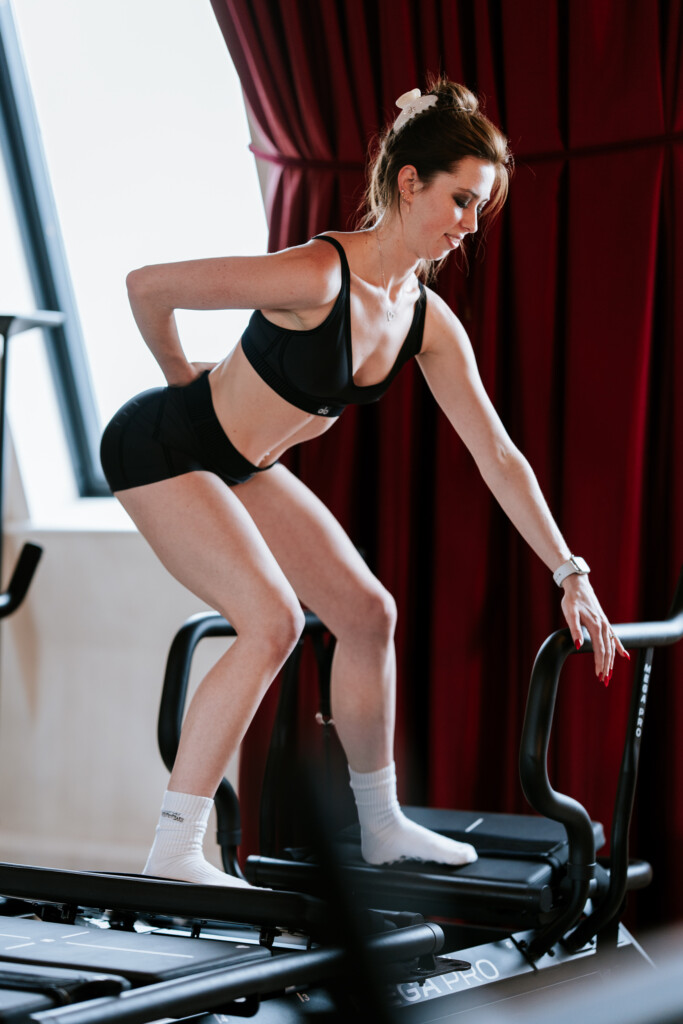
60 to 120 Seconds That Change Your Muscles
Lagree moves use long holds on the Megaformer instead of short sets with heavy loads. You perform each exercise for 60 to 120 seconds under constant spring resistance, which increases time under tension and targets slow-twitch fibers and stabilizer muscles.
That continuous demand recruits small motor units, forces micro muscle activation, and builds muscular endurance alongside strength, so you often feel shaking as deep fatigue sets in.
Joint Friendly Intensity Without the Impact
Lagree replaces jumping and explosive landings with smooth carriage work and controlled slides on the reformer-style machine. The movement stays low-impact, which reduces stress on knees and spine while still loading muscles through complete ranges of motion.
Trainers blend tempo control and spring resistance to create intensity that spares joints and preserves mobility for people recovering from injury or who need a kinder joint profile.
Flow With Resistance Like Pilates, But More Force
Lagree borrows the continuous flow and posture focus of Pilates and yoga, then adds constant mechanical resistance. Every transition keeps muscles engaged, so flexibility and strength improve simultaneously across the:
- Posterior chain
- Core
- Glutes
- Quads
- Hamstrings
The machine forces precise alignment and breath control, sharpening the mind-muscle connection as you move.
Strength and Cardio in One Efficient Session
Classes link moves with minimal rest, so your heart rate stays elevated while you work strength patterns. Simultaneous metabolic conditioning and resistance training deliver calorie burn and muscular stimulus in the same block of time.
The approach favors compound movements, isometric holds, and short rest intervals to keep the session both taxing and time-efficient.
Slow, Intentional Reps Over Speed and Volume
Lagree prioritizes control and strict tempo instead of rep count or speed. You move deliberately, often a three to four second count in each direction, so muscles work through every inch of the motion and posture stays solid. This trains neural pathways as much as muscle, improves postural alignment, and enhances core stability without relying on heavy loads or fast sprints.
Ask yourself which elements matter most to your goals: joint preservation, full body conditioning, efficient cardio, or fine-tuned strength. Which would you try first on the Megaformer?
Related Reading
6 Tips for Maximizing Lagree Workouts
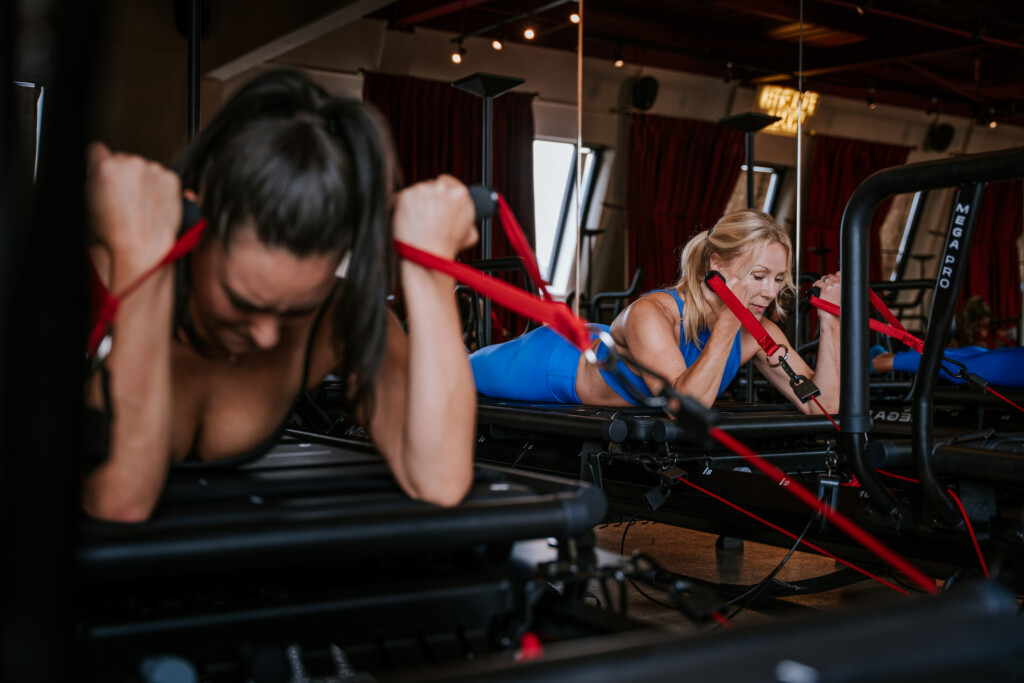
1. Center Stage: Pick A Machine In The Middle
Watch the room and learn faster. New students often hide in a corner. If you set up in the middle, you can see seasoned clients from multiple angles and copy the line of the leg press, the hand placement on plank variations, and the subtle micro movements that make Lagree moves efficient.
The instructor can see you easily and step in with corrections to your spine alignment or core engagement. That feedback shortens the learning curve for proper form on the Megaformer and on resistance sequences.
Ready to place your machine where you can watch and be watched?
2. Slow Down: Make Each Lagree Move Count
Lagree trains time under tension, not speed. Move with control through each rep. Slow tempo and tiny controlled contractions force your muscles to work through a full range, recruit stabilizers, and build lean strength and endurance.
Treat the instructor’s cadence like a metronome. Let the beat guide a measured push on the carriage, a steady hinge in lunges, and long holds in isometric positions. Slowing down intensifies the work without adding load.
Can you reduce the tempo and hold the contraction long enough to feel the muscle engage?
3. Sync Your Breath: Breathe With Each Move
Match breath to movement: exhale on the effort, inhale on the release. Deep, long breaths keep your core engaged and prevent the Valsalva response that stiffens your spine during heavy resistance work.
Controlled breathing also helps you maintain slow, steady Lagree moves and supports recovery between micro bursts. Count your breaths to match the tempo if you need an anchor.
Try two slow breaths per rep and see how your core and form respond.
4. Whole Body Check: Be Mindful Of The Rest Of Your Body
Do not lock onto the target muscle and ignore everything else. While performing squats or lunges on the Megaformer, scan your body. Are the abs braced? Is your pelvis neutral? Are the shoulders relaxed and away from the ears?
Lagree rewards alignment. When you keep the spine stacked and the pelvis stable, the glute activation and hamstring engagement improve, and you avoid compensatory movements that lead to strain. Use the instructor cues and mirror the minor corrections you observe.
What part of your body needs the next cue?
5. Pause Smart: Take Breaks Rather Than Losing Form
A little shake is progress. But when form collapses, stop and reset. Short rests allow motor control to return, enabling you to re-engage the correct muscles for the next set, rather than relying on momentum or other muscle groups.
Step out briefly, shake the leg, sip water, reset foot placement and alignment, then reenter the move with clean technique. That quick restart protects your joints and makes each Lagree move more effective than pushing through with bad form.
Could a 10-second reset help you finish the set with proper technique?
6. Schedule Recovery: Respect Rest Between Classes
Expect soreness after your first Lagree sessions. You used stabilizers and small muscle fibers you rarely target with other workouts. Wait at least a day before jumping back in so muscle repair and adaptation can occur.
Aim for two to three sessions per week early on, add mobility and light cardio on off days, sleep well, and prioritize protein to support recovery. Over time, your recovery window will shrink as your metabolic conditioning and strength improve.
Plan your next class 48 hours out and include gentle mobility work in the meantime.
Related Reading
Book a Lagree Class in London Today

BLOOD, SWEAT & TEARS creates a women-focused training space where design matters. The studio clears out the usual grime, noise, and awkward equipment to make room for purposeful coaching and calibrated machines.
You move through Lagree Moves on the Megaformer with slow controlled movements, isometric holds, and micro tempo transitions that protect joints while challenging muscles. Want a place that respects your time and your body?
How Lagree Moves Deliver Faster Results
Lagree Moves combine muscular endurance, strength training, and metabolic conditioning in each sequence. You use spring resistance, pulsing reps, plank variations, and controlled eccentrics to overload muscles without heavy loading.
That builds strength while improving:
- Posture
- Balance
- Core engagement
The result comes from high-intensity, low-impact work that taxes muscle and heart together, producing visible changes sooner than splitting cardio and strength into separate sessions.
What a 45 Minute Class Actually Looks Like
Classes move with intention. You spend guided blocks on lower body, upper body, and full body core integration. Expect leg presses, hamstring curls, glute work, tricep dips, and slow biceps work, all dialed into precise tempo and range of motion.
Instructors cue timing, alignment, and breathing so you hit each Lagree Move correctly. The format keeps heart rate elevated while preserving form for safety and efficiency.
How Safety and Technique Reduce Injury Risk
Lagree emphasizes control over momentum. Slow tempo and isometric holds force muscles to work without joint stress. Machines provide guided resistance so you maintain proper alignment. Coaches correct form in real time and scale resistance to your level.
The combination of precision, reduced impact, and constant coaching creates a safer training environment for women at every fitness stage.
Instructor Training and the Mentorship Pipeline
Every instructor earns certification and then enters a hands-on mentorship program. They train on programming, alignment, cueing, and client spotting, so every class runs smoothly and is motivating. That mentorship ensures consistency across classes and protects clients from poor coaching or unsafe progressions.
You get motivated coaching and technical feedback from a team that knows Lagree Moves inside out.
Why You Will Feel a Difference in Two Weeks
Consistent work on muscle endurance and core stability shifts how your body carries itself. You will notice better posture, firmer muscle tone, and more control in everyday movement. The training increases time under tension and promotes metabolic change, so clothes fit differently and strength becomes more noticeable.
How will you tell if it worked? Try a plank variation or single-leg balance the week you start, and compare how it feels two weeks later.
How This Studio Keeps Classes Fun and Uplifting
Coaching style matters. Instructors mix challenge with encouragement and adjust tempo to keep sessions engaging. Music, cueing, and partner energy raise motivation without turning into a performance show. The studio focuses on creating effective sequences that feel purposeful and achievable for a wide range of clients.
Booking a Class and What to Expect on Your First Visit
Reserve a class online and arrive a few minutes early for orientation. Staff show you the Megaformer setup, adjust spring settings, and walk through basic Lagree Moves before the class begins. Instructors scale resistance and offer modifications so you never feel left behind or unsafe.
After your first session, you can expect soreness in new places and a clear sense of which movements paid off.


